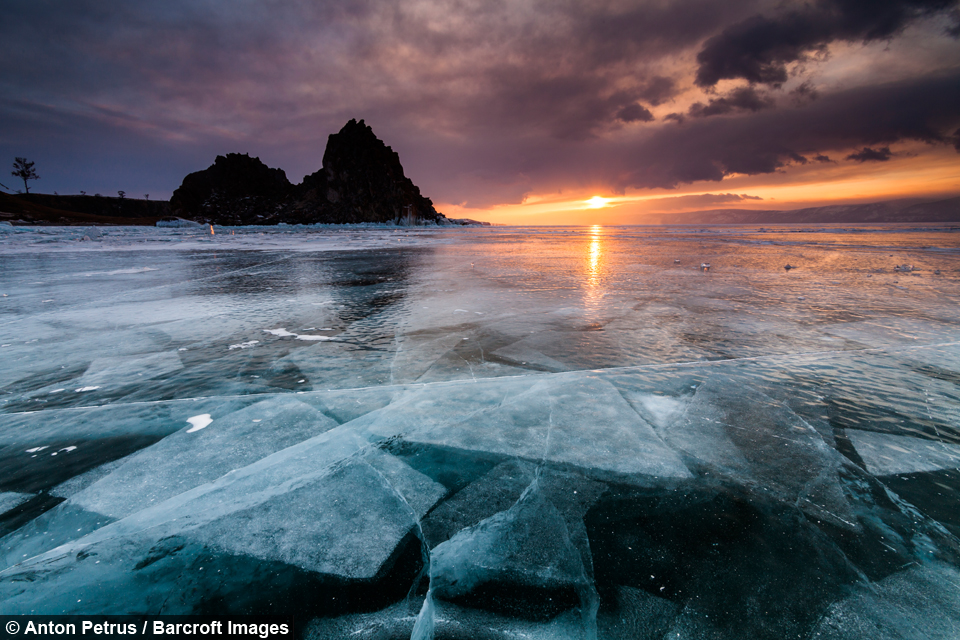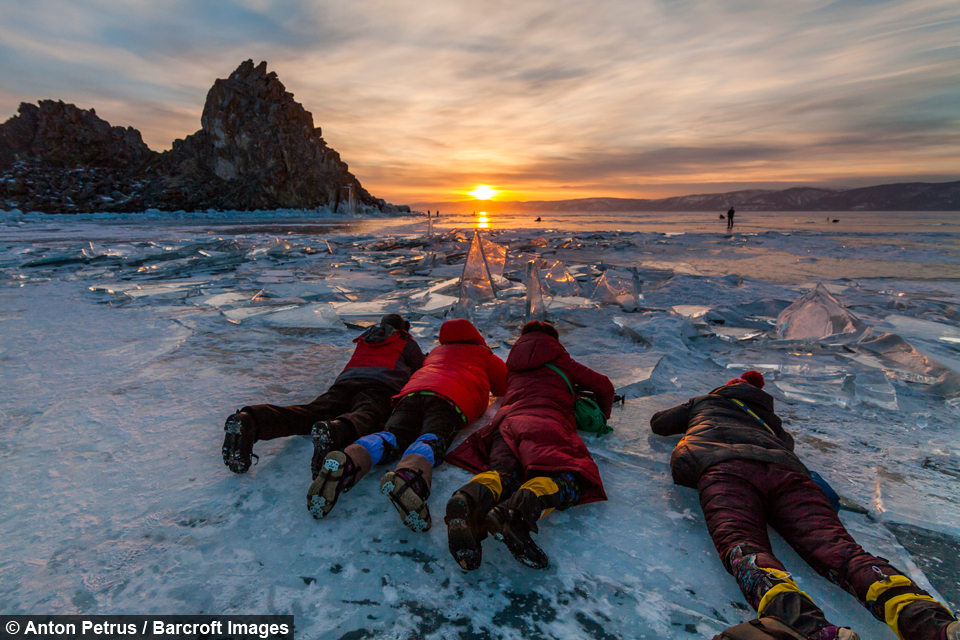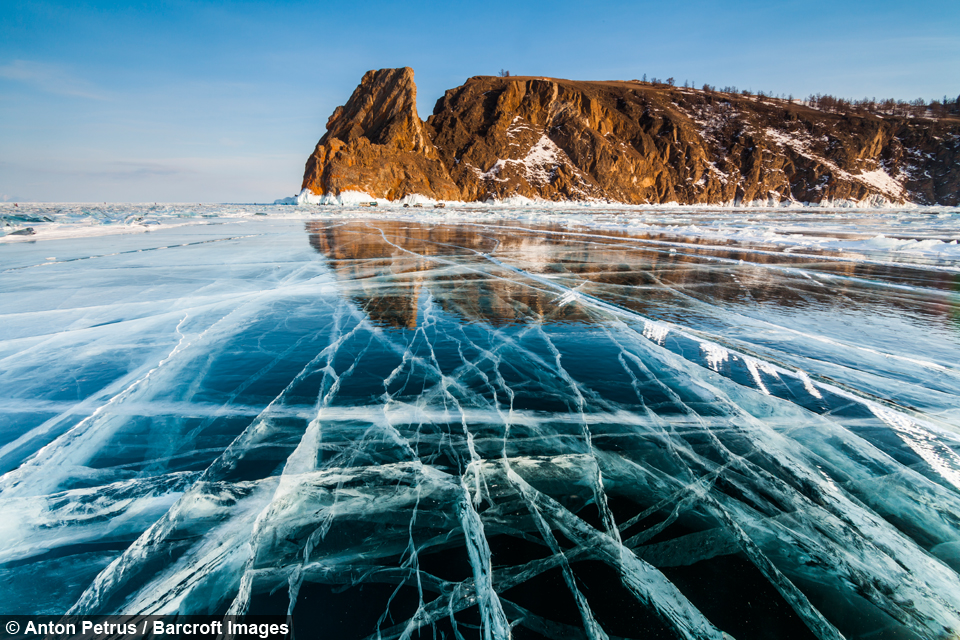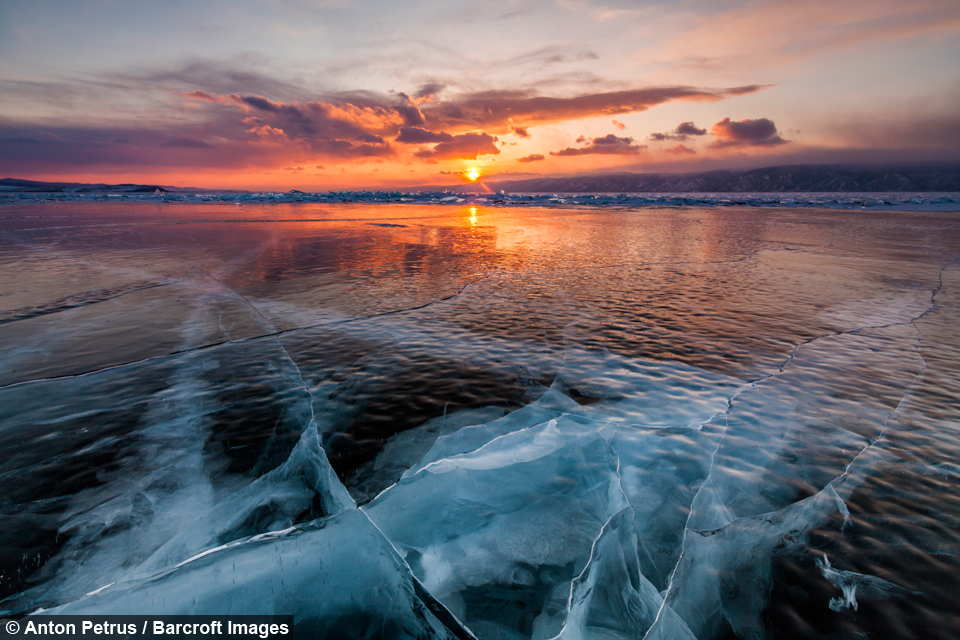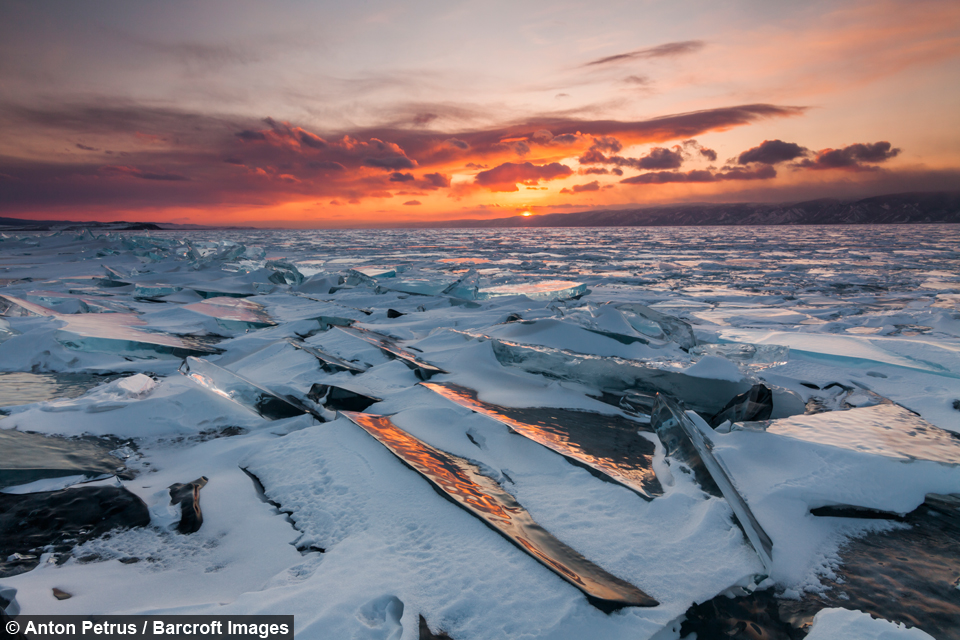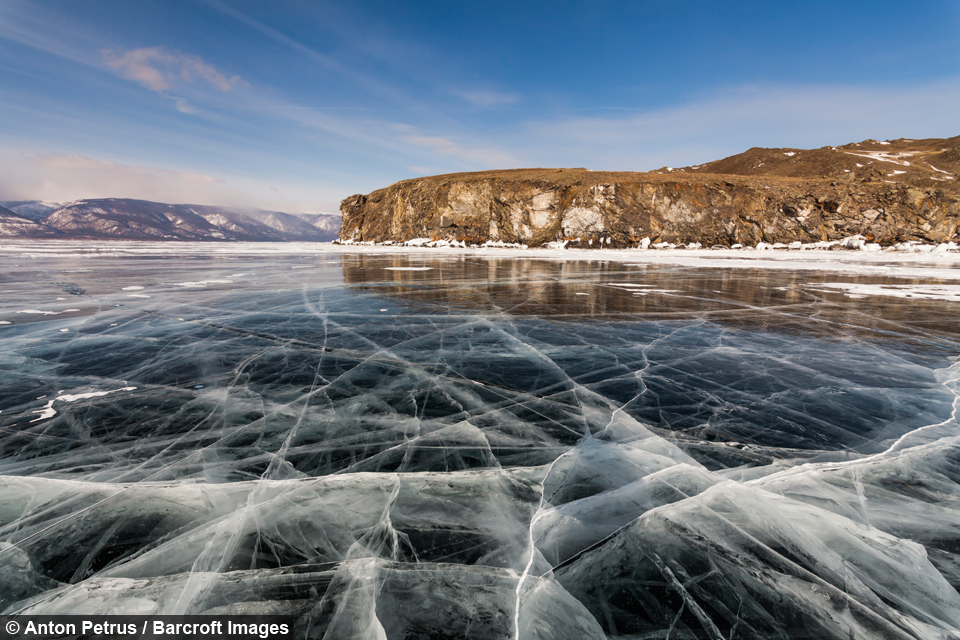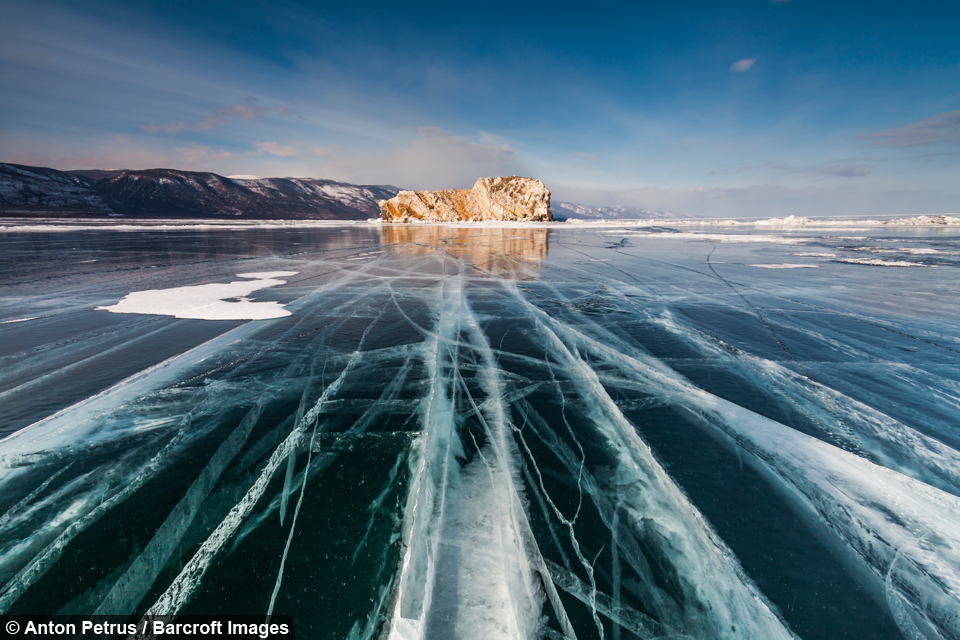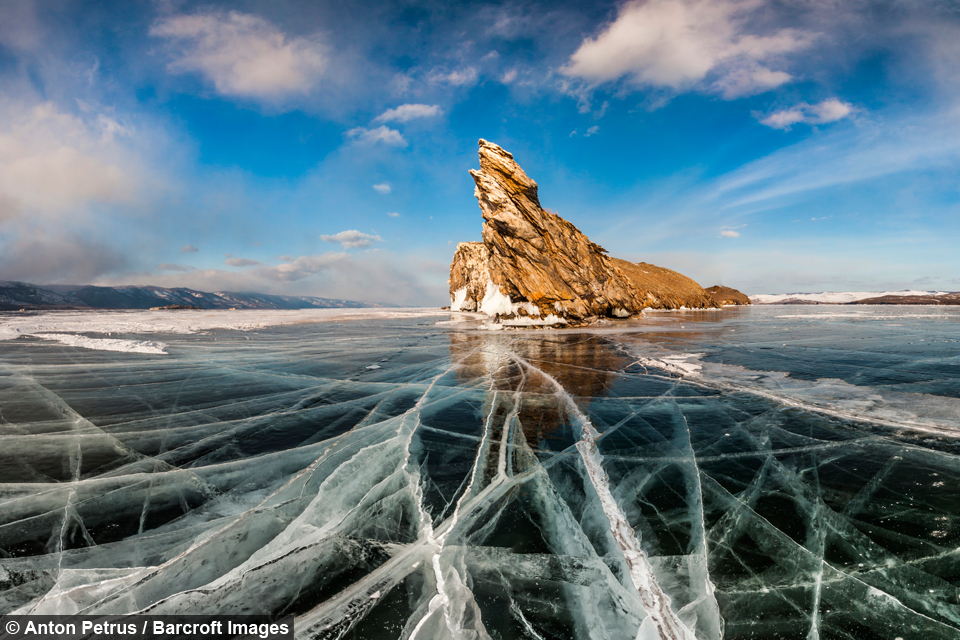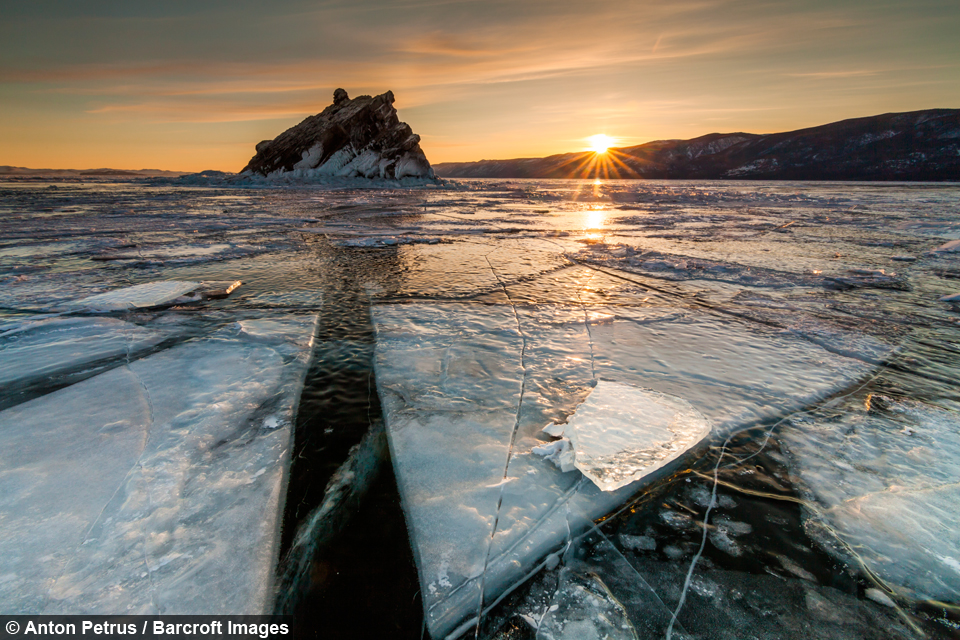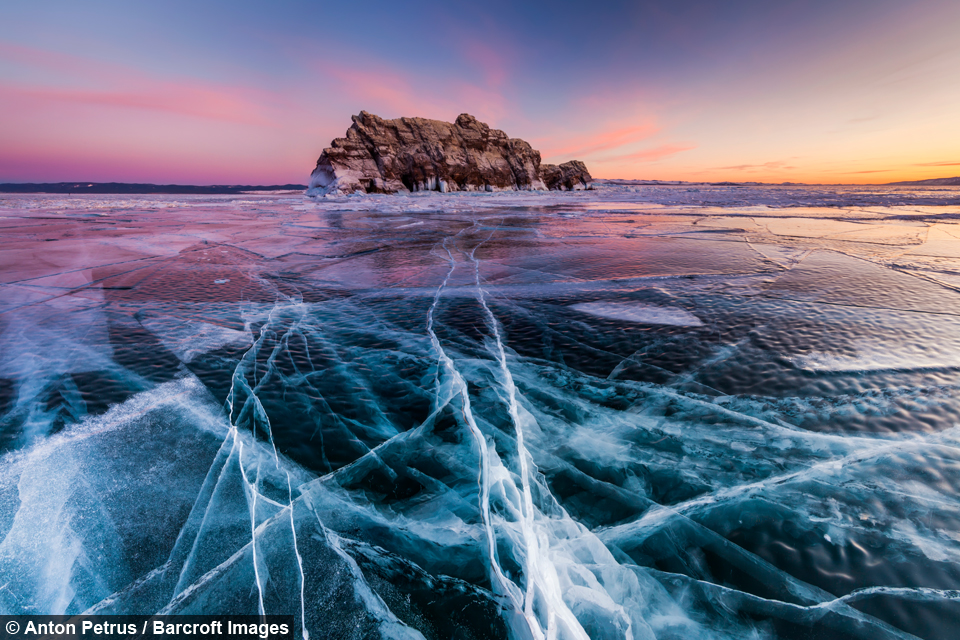Photographer captures cracks in the ice of world's largest and oldest lake
By Crystal Chung @CrystalKChung
Scroll down for the full story
Surrounded by mile-high snowcapped mountains, Lake Baikal in south-eastern Siberia offers views of unmatched beauty. The lake is 25 million years old and 1,700 metres deep, making it the oldest and deepest freshwater lake in the world.
Shot by intrepid photojournalist Anton Petrus in March 2016, the following series of breathtaking images show exactly why Lake Baikal has become one of the most visited lakes in the world.
He said: “The legendary lake is the deepest lake on Earth and in winter it becomes one complete piece of ice.
“It was spectacular to see the lake covered with the world famous transparent cracked ice, ice drifts and ice grottos."
Baikal is home to thousands of species of plants and animals, many of which exist nowhere else in the world. The lake was declared a UNESCO World Heritage Site in 1996 and is also home to Buryat tribes who reside on the eastern side of the lake.
The 30-year-old photojournalist drove for six hours from the city of Irkutsk to capture the striking photos, which show hundreds of large cracks in the ice set against the rising sun making the scene appear otherworldly.
Anton said: “It is not difficult to come and enjoy the scenery in Baikal but the main condition is not to be afraid of frost and be able to stand firmly on slippery ice.
“I had been dreaming for a long time to see winter in Baikal. And when I saw it I started to come here every year.”
Known as the 'Galapagos of Russia', its age and isolation have produced one of the world's richest and most unusual freshwater faunas.
Known as the 'Galapagos of Russia', its age and isolation have produced one of the world's richest and most unusual freshwater faunas.
Anton said: “‘Photographing cracks like these don’t seem real and seeing it was like seeing something from another world, it’s what keeps drawing me back in year after year.”
